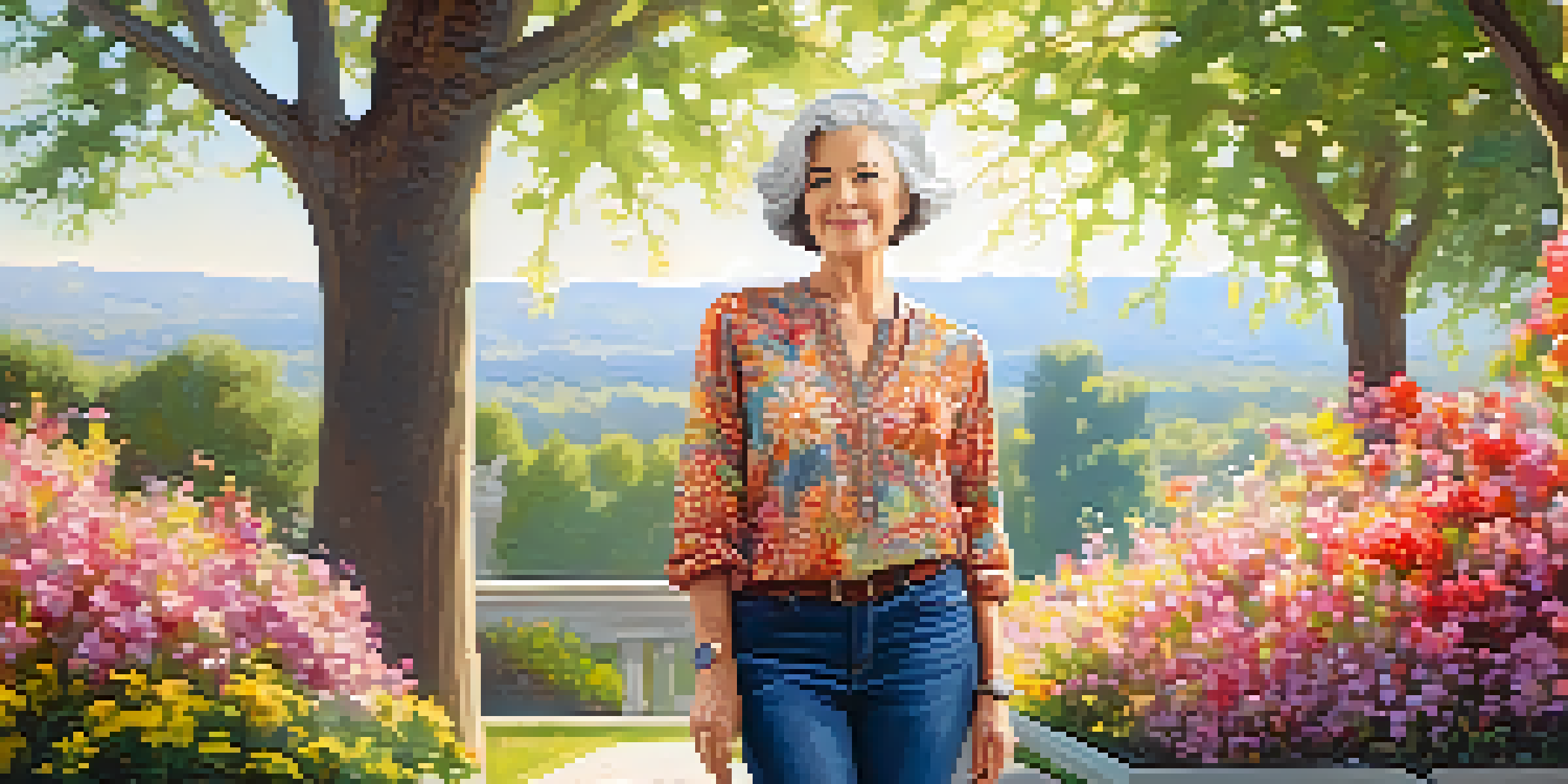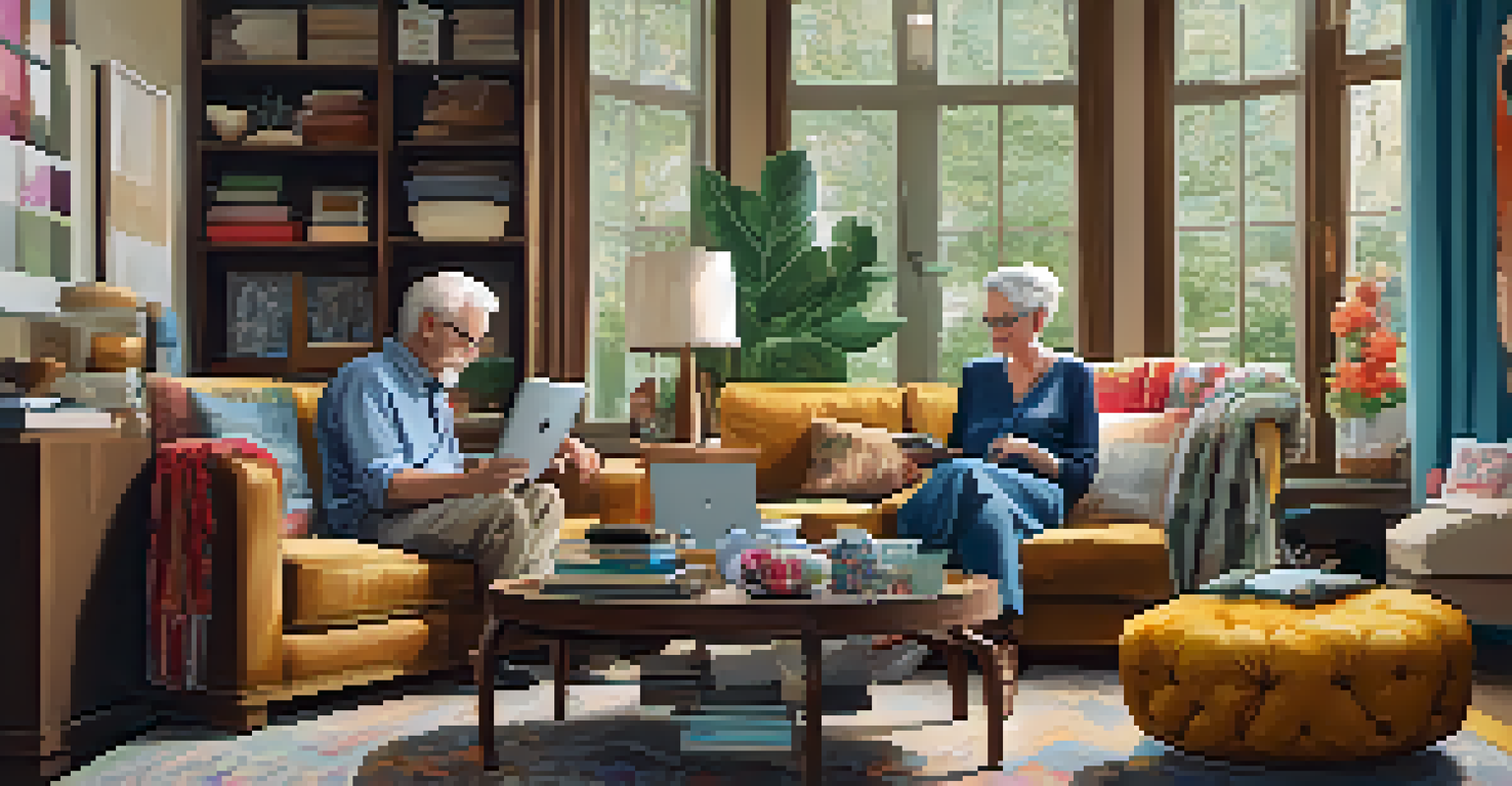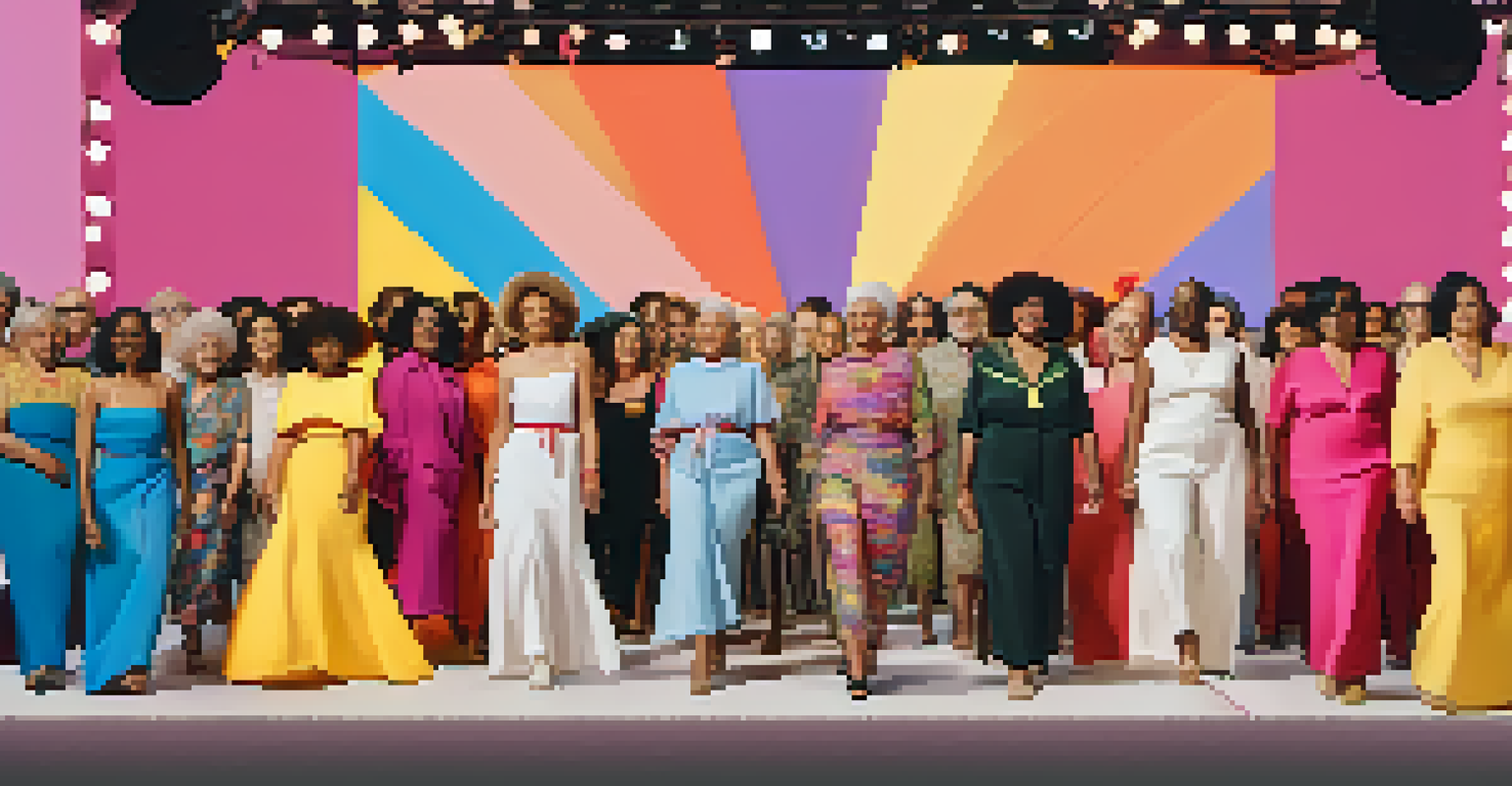Inclusive Fashion: Brands Catering to Older Generations

Understanding Inclusive Fashion for Older Generations
Inclusive fashion refers to clothing designed to meet the needs of diverse body types, age groups, and lifestyles. For older generations, this means considering comfort, style, and functionality in every piece. As our society ages, it’s crucial for fashion brands to recognize the unique preferences and requirements of older adults, making them feel valued and stylish.
Fashion should be a form of escapism, and not a form of imprisonment.
Many older adults face challenges such as mobility issues, skin sensitivities, or changes in body shape. Fashion that accommodates these factors can enhance their confidence and quality of life. For instance, clothing with easy closures or breathable fabrics can make a significant difference in daily ease and comfort.
Moreover, inclusive fashion isn’t just about practicality; it’s about self-expression. Older generations want to express their individuality and style just as much as younger ones do. By embracing this, brands can create vibrant communities that celebrate all ages, breaking down stereotypes associated with aging.
Key Brands Leading the Charge in Inclusive Fashion
Several brands are making waves in the inclusive fashion scene by focusing on older consumers. For instance, Eileen Fisher offers timeless designs that prioritize both style and sustainability, appealing to mature shoppers who value quality. Their relaxed silhouettes and soft fabrics ensure comfort without sacrificing elegance.

Another noteworthy brand is Universal Standard, which has expanded its size range while also considering the preferences of older adults. Their mission is to make stylish clothing accessible to everyone, regardless of size or age. This commitment to inclusivity resonates with a broad audience, including older generations.
Inclusive Fashion Enhances Confidence
Fashion designed for older generations prioritizes comfort and functionality, helping them feel valued and stylish.
Lastly, brands such as J.Jill and Talbots have long recognized the importance of catering to older women. With classic designs and thoughtful details, these brands provide clothing that not only fits well but also enhances the wearer's confidence and sense of style.
The Importance of Comfort in Fashion Choices
Comfort is often at the forefront of fashion choices for older adults. As we age, our bodies may require softer materials, looser fits, and functional designs. Brands that prioritize comfort in their collections often see a loyal customer base among older generations.
Style is a way to say who you are without having to speak.
Think about it: how many times have you bought a piece of clothing that looked great on the hanger but felt restrictive or uncomfortable? Older adults are keenly aware of how clothing affects their overall well-being, and they seek brands that understand this need. This is where innovation plays a key role.
For example, clothing with stretchy fabrics, adjustable waistbands, and thoughtful cuts can significantly enhance comfort. By focusing on these elements, brands can create collections that resonate deeply with older customers, proving that fashion can be both stylish and comfortable.
Styles that Empower: Fashion for Every Occasion
Older generations have diverse lifestyles that require versatile fashion options. From casual outings to formal events, the need for clothing that transitions seamlessly between settings is critical. Brands that offer stylish, adaptable pieces are sure to capture the attention of this demographic.
Imagine a chic tunic that pairs perfectly with jeans for a day out and can be dressed up with jewelry for an evening gathering. This kind of versatility is exactly what older adults are looking for. It not only simplifies wardrobe choices but also enhances the wearer's confidence in any setting.
Brands Embrace Diverse Styles
Leading brands are creating versatile clothing options that cater to the unique preferences and lifestyles of older adults.
Additionally, brands that embrace bold colors and patterns can help older adults feel vibrant and alive. By offering styles that allow for personal expression, these brands empower their customers to embrace their individuality, regardless of age.
The Role of Technology in Inclusive Fashion
Technology is shaping the future of inclusive fashion in exciting ways. From virtual fitting rooms to adaptive clothing innovations, tech is making it easier for older generations to find outfits that suit their needs. This integration of technology enhances the shopping experience and addresses specific challenges faced by older adults.
For instance, some brands now offer clothing that adjusts to body temperature or moisture levels, ensuring comfort throughout the day. These innovations can significantly improve the overall experience for older consumers, making them feel more connected to fashion.
Moreover, online shopping platforms are making it easier for older adults to explore a wider range of options from the comfort of their homes. This accessibility is crucial, as it empowers them to make informed choices without the pressure of in-store shopping.
Breaking Stereotypes: Fashion and Aging
The fashion industry has long been criticized for perpetuating stereotypes about aging. Many brands have historically focused on youthful aesthetics, often sidelining older adults. However, a shift is occurring as more brands recognize the need to break these outdated perceptions.
By showcasing older models and creating campaigns that highlight the beauty and style of aging, brands can challenge societal norms. This not only fosters inclusivity but also encourages older generations to embrace their unique fashion sense, proving that style knows no age.
Technology Drives Fashion Accessibility
Innovative technologies like virtual fitting rooms and adaptive clothing are making it easier for older adults to find suitable outfits.
Think of the impact when a brand features a confident older woman in their advertising. It sends a powerful message that aging is not a limitation but an opportunity to showcase one’s personality and style. By embracing diversity in age, the fashion industry can inspire everyone to celebrate their individuality.
Future Trends in Inclusive Fashion for Older Generations
As we look ahead, the future of inclusive fashion for older generations appears bright. With a growing awareness of the diverse needs of this demographic, brands are beginning to innovate more thoughtfully. Expect to see an increase in adaptive clothing options that cater to mobility challenges, along with designs that prioritize ease of wear.
Furthermore, the trend of sustainability is likely to intersect with inclusive fashion. Older generations often value quality over quantity, seeking out eco-friendly options that last. Brands that combine sustainable practices with inclusive designs will likely resonate well with this audience.

Finally, community engagement will play a significant role in shaping future collections. Brands that actively seek input from older consumers and involve them in the design process will not only create more relevant products but also foster a sense of belonging and loyalty among their customers.